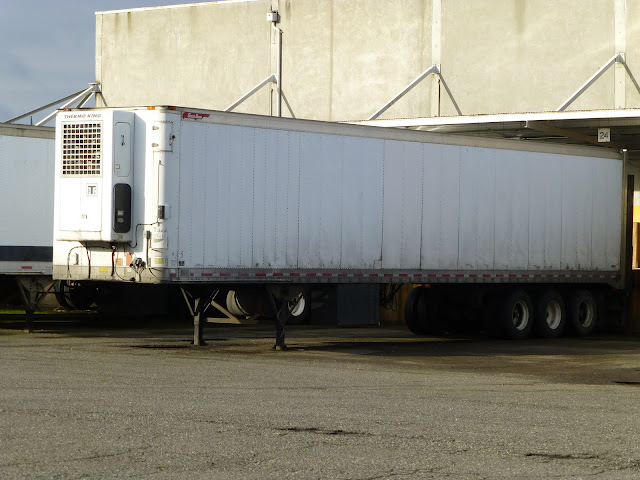I was sitting in traffic on Interstate-5 Southbound,a little north of the Rose Quarter. A light mist that morning compelled me to set the wipers to intermittent. Squaaak! It was impossible to set those wipers to do their job quietly in the Portland drizzle. Whoosh. Whoosh. Squaaak. Whoosh. Cars splashed past in the adjacent free-flowing lane. I was stuck behind a semi that wasn't moving. And with no opportunity to change lanes, it was a good time to practice being patient.
I did have an excellent view of the tail end of that truck. That's when I noticed the tiny little door inset into the right rear door of the trailer. I'd seen them before. Occasionally, they were open.
This was before everybody had internet on their phones. I had to wait until I was home to look it up on Google.
Here's what I learned.
Truckers disagree.
Also, that little door is called an vent door, although some call it a pulp door, an inspection door or a fruit door. Usually, you'll see them on refrigerated trailers (commonly called reefers), but vented vans also exist for products such as melons, potatoes and onions that benefit from the fresh air, but don't require refrigeration. The vents are also useful to air out a trailer after a pungent load, or when the inside of the trailer needs to dry after washing.
Even people who have noticed the little doors in the back may have missed the corresponding door in the front, up high on the driver's side. Two doors, one at the front, another at the rear, are necessary for airflow through the trailer.
In the old days, the inspection door was used to check the temperature of the inside of refrigerated trailers. The driver used a thermometer attached to a long pole to accomplish this task. Now, refrigeration units are much more reliable and the driver relies on temperature information provided by electronics.




No comments:
Post a Comment